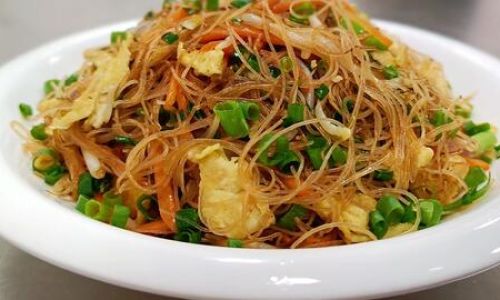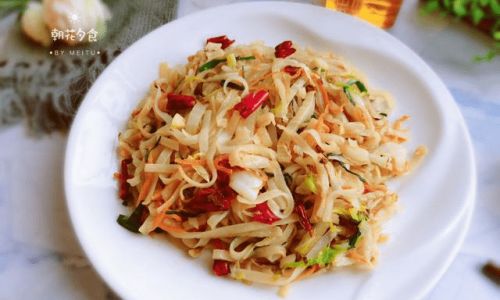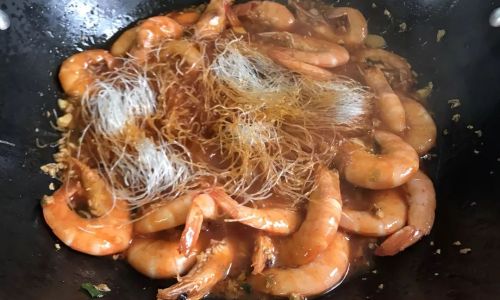Introduction
Stir-fried noodles, a staple in many cuisines worldwide, offer a delightful blend of flavors, textures, and aromas that can satisfy even the most discerning palate. Whether you’re a seasoned chef or a home cook eager to impress, achieving perfectly aromatic and non-greasy stir-fried noodles is an art form worth mastering. This guide delves into the intricacies of preparing stir-fried noodles, focusing on techniques and ingredients that ensure your dish is both fragrant and light, without the unwanted heaviness of excess oil.
Understanding the Basics
Before diving into the specifics, it’s crucial to grasp the foundational principles of stir-frying. Stir-frying, a cooking technique originating in Chinese cuisine, involves rapidly cooking small pieces of food in a hot wok or pan with a minimal amount of oil. The high heat seals in juices, caramelizes surfaces, and creates a flavorful crust, all while maintaining the dish’s freshness and vibrancy.

When it comes to stir-fried noodles, the goal is to achieve a balance between the noodles’ texture, the sauce’s flavor, and the overall dish’s appearance. Over-oiling can turn a promising meal into a greasy disappointment, while insufficient oil can lead to sticking and burnt bits. Here’s how to strike the perfect balance.
Selecting the Right Noodles
The first step in crafting delicious stir-fried noodles is choosing the appropriate type of noodle. Various options exist, each with its unique texture and absorption capabilities:
- Rice Noodles: These are gluten-free and have a tender, slightly chewy texture. They absorb flavors well but require careful handling to prevent sticking.
- Egg Noodles: Made with wheat flour and eggs, they are firmer and more elastic, holding up well to stir-frying.
- Soba Noodles: Made from buckwheat flour, they offer a nutty flavor and are slightly firmer than rice noodles.
- Udon Noodles: Thick and chewy, they are excellent for hearty stir-fries.
For stir-frying, opt for dried noodles rather than fresh ones, as dried noodles tend to hold their shape better during the cooking process. Soak them in hot water until al dente, then drain and rinse thoroughly to remove excess starch, which can cause sticking.

Preparing the Noodles
Once you’ve selected your noodles, prepare them correctly:
- Soaking: Follow the package instructions for soaking times. Over-soaking will result in mushy noodles, while under-soaking will leave them too firm.
- Rinsing: After soaking, rinse the noodles under cold running water to stop the cooking process and remove any starch. Shake off excess water but do not fully drain, as a bit of moisture helps with the stir-frying process.
- Tossing with Oil: To prevent sticking, toss the drained noodles lightly with a small amount of vegetable oil. This creates a protective barrier between the noodles and the hot pan.
Crafting the Sauce
The sauce is the soul of stir-fried noodles, providing depth of flavor and binding the dish together. A well-balanced sauce should be flavorful, slightly thickened, and not overly oily. Here’s a basic recipe to get you started:

- Soy Sauce: For a savory base.
- Oyster Sauce: Adds a rich, umami flavor.
- Sesame Oil: A touch for aroma and richness.
- Shaoxing Wine (or dry sherry): Enhances flavors and adds complexity.
- Sugar: To balance the saltiness and add a hint of sweetness.
- Cornstarch Slurry: To thicken the sauce slightly.
Combine these ingredients in a bowl, adjusting quantities to taste. Remember, a little goes a long way, especially with soy sauce and oyster sauce, which can quickly overpower the dish.
The Stir-Fry Technique
Now, let’s dive into the stir-fry process itself:
- Heating the Pan: Preheat your wok or large skillet over high heat until it’s smoking hot. This is crucial for creating a sear on the ingredients, locking in juices and flavors.
- Adding Oil: Pour in just enough oil to coat the bottom of the pan. Use a high-smoke-point oil like peanut, vegetable, or grapeseed to avoid smoking and burning.
- Aromatics: Add your aromatics first – garlic, ginger, and scallions – and stir-fry until fragrant (about 30 seconds). This creates the foundation of your dish’s aroma.
- Proteins and Vegetables: If your stir-fry includes meat or vegetables, add them next. Stir-fry in batches if necessary to avoid overcrowding the pan, which reduces the heat and steams the ingredients rather than sears them.
- Sauce: Once the proteins and vegetables are nearly cooked, pour in your prepared sauce and stir quickly to coat everything evenly.
- Noodles: Finally, add the prepared noodles to the pan. Use tongs or chopsticks to toss and stir continuously, ensuring the noodles are evenly coated with the sauce and heated through. The residual moisture in the noodles will help the sauce adhere, creating a glossy finish.
- Final Adjustments: Taste and adjust seasoning if needed. A splash of vinegar or lemon juice can brighten the flavors.
Serving and Enjoying

Transfer your stir-fried noodles to a serving dish immediately after cooking to prevent overcooking. Garnish with fresh herbs like cilantro, green onions, or sesame seeds to add a burst of color and additional flavor layers.
Pair your stir-fried noodles with a light soup, a crisp salad, or a side of steamed vegetables to create a balanced meal. The key to enjoying them fully is to appreciate the harmony of flavors and textures – the tender noodles, the savory sauce, the crunch of fresh vegetables, and the aromatic notes from the aromatics.
Conclusion
Mastering the art of crafting aromatic and non-greasy stir-fried noodles takes practice and attention to detail. By selecting the right noodles, preparing them correctly, crafting a balanced sauce, and employing proper stir-fry techniques, you can elevate this humble dish to gourmet status. Remember, the beauty of stir-frying lies in its simplicity and versatility – with a few basic principles in mind, you can experiment with various ingredients and flavors, creating endless variations to suit your taste preferences. Happy stir-frying!






0 comments